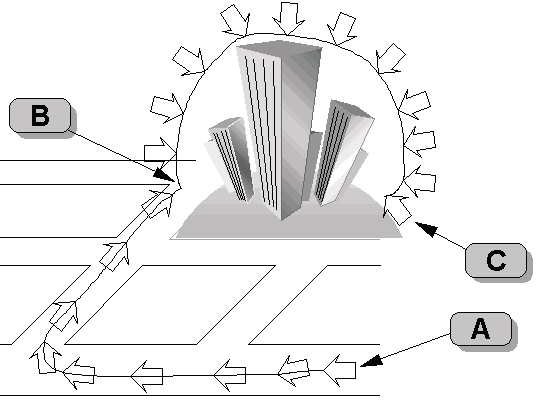
Figure 1: Locus of Turning Pointer
Younosuke Furui,
"Turning Pointer: A More Effective Presentation Tool with Orientation
Control,"
Proc. 1999 IEEE International Conference on Systems, Man, and Cybernetics,
vol. 4, pp. 176-181 (TA14-1),
October 14, 1999.
In computer-mediated human-to-human interactions, or presentations, an arrow-shaped pointer is used to indicate a graphical object displayed on the screen. While a conventional pointer has a fixed orientation, the graphical object has several dimensions, such as length and orientation. Thus, the user has to move the pointer around the object in order to show which dimension is being discussed, even when the object is not moving. This paper introduces a new type of pointer, Turning Pointer, that allows users to take advantage of the orientation for more effective presentations. It has two important features. First, it provides users with more than one way to show which dimension of the object they are talking about. Figure 1 shows an example. Second, it allows users to interact with the system at any time during the presentation without performing any switching operation, since it does not redefine operations already defined for the interaction, such as clicking a mouse button.

The arrow-shaped pointer is oriented forward while moving from A to B, and toward the building while moving from B to C.